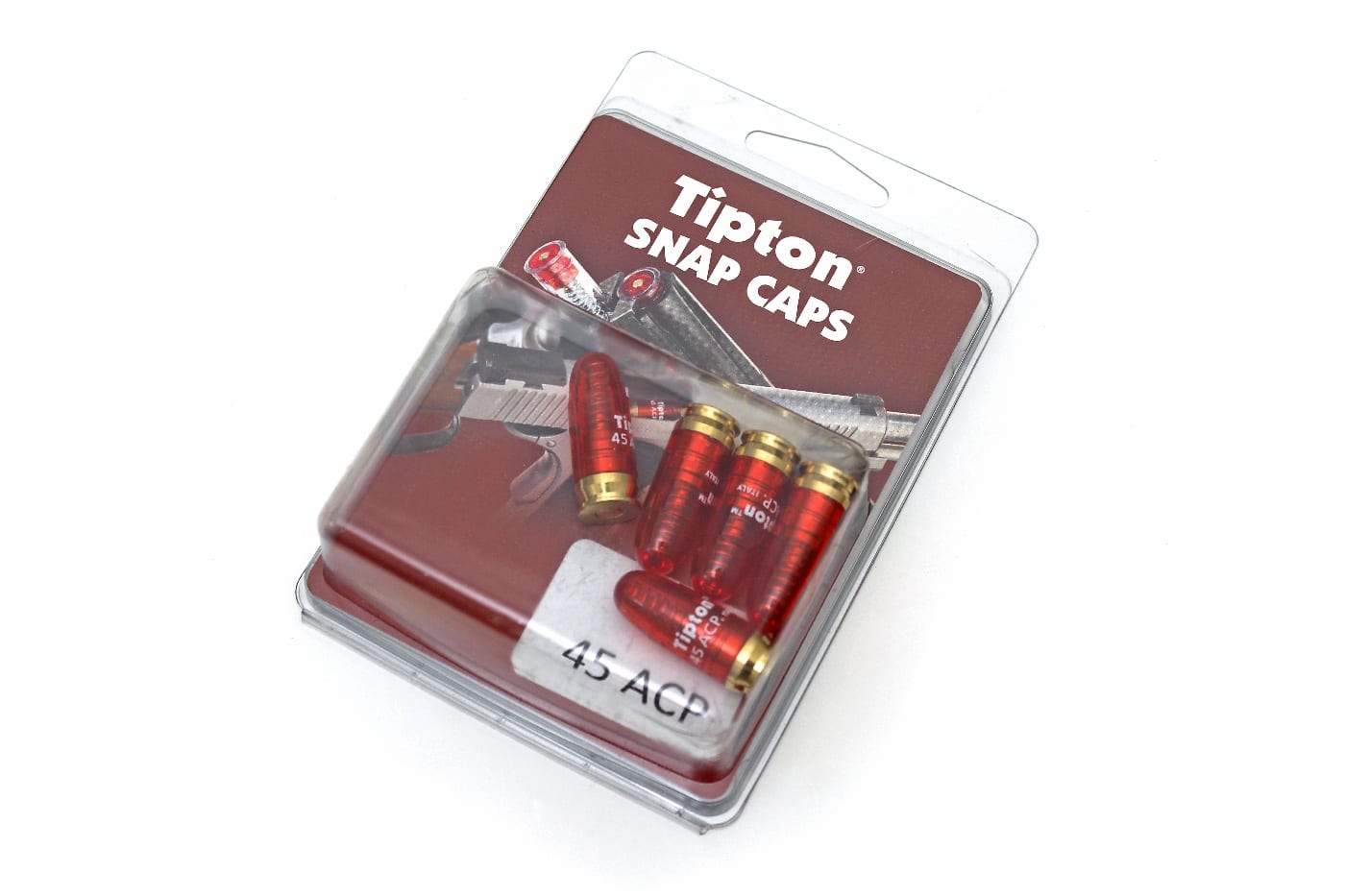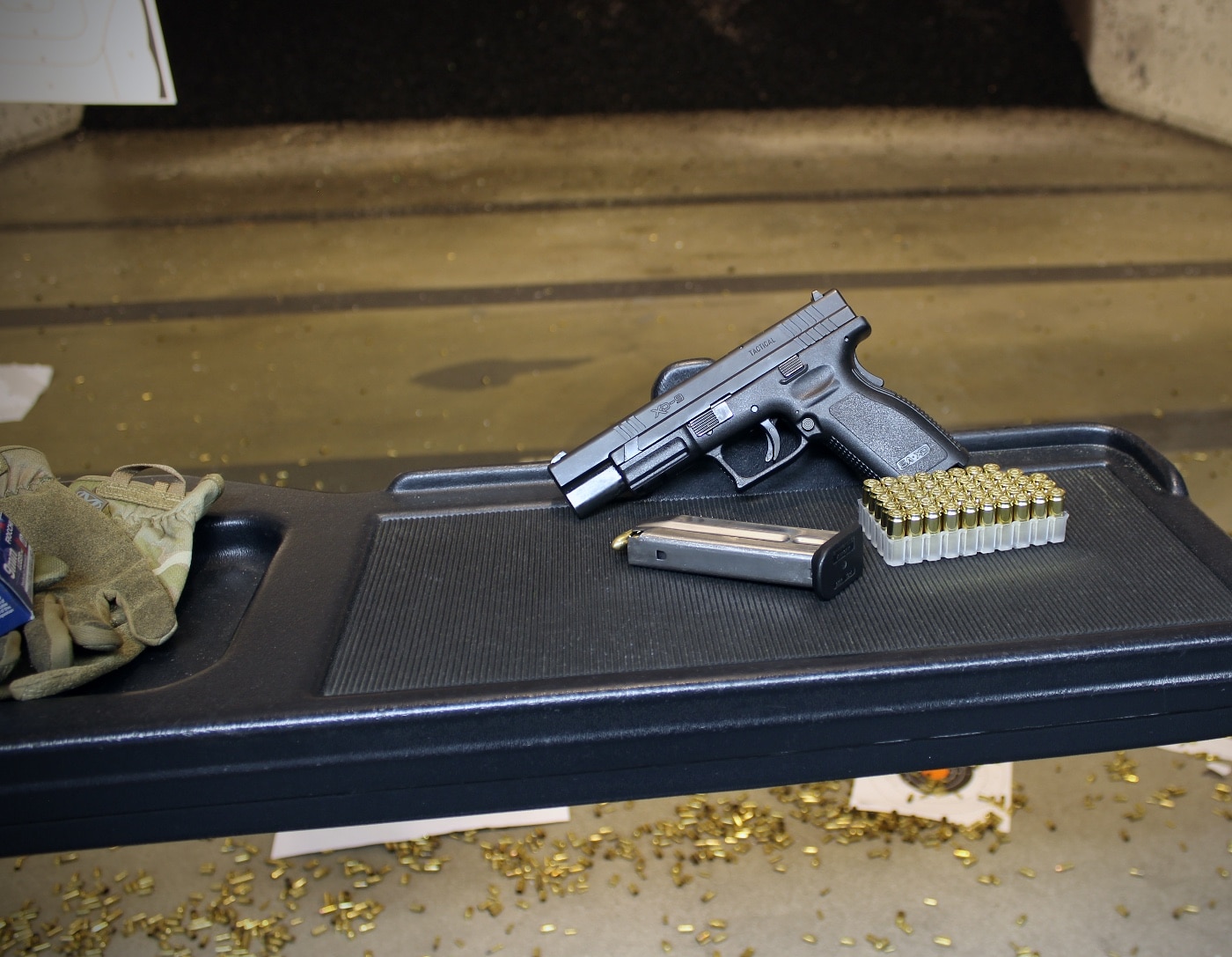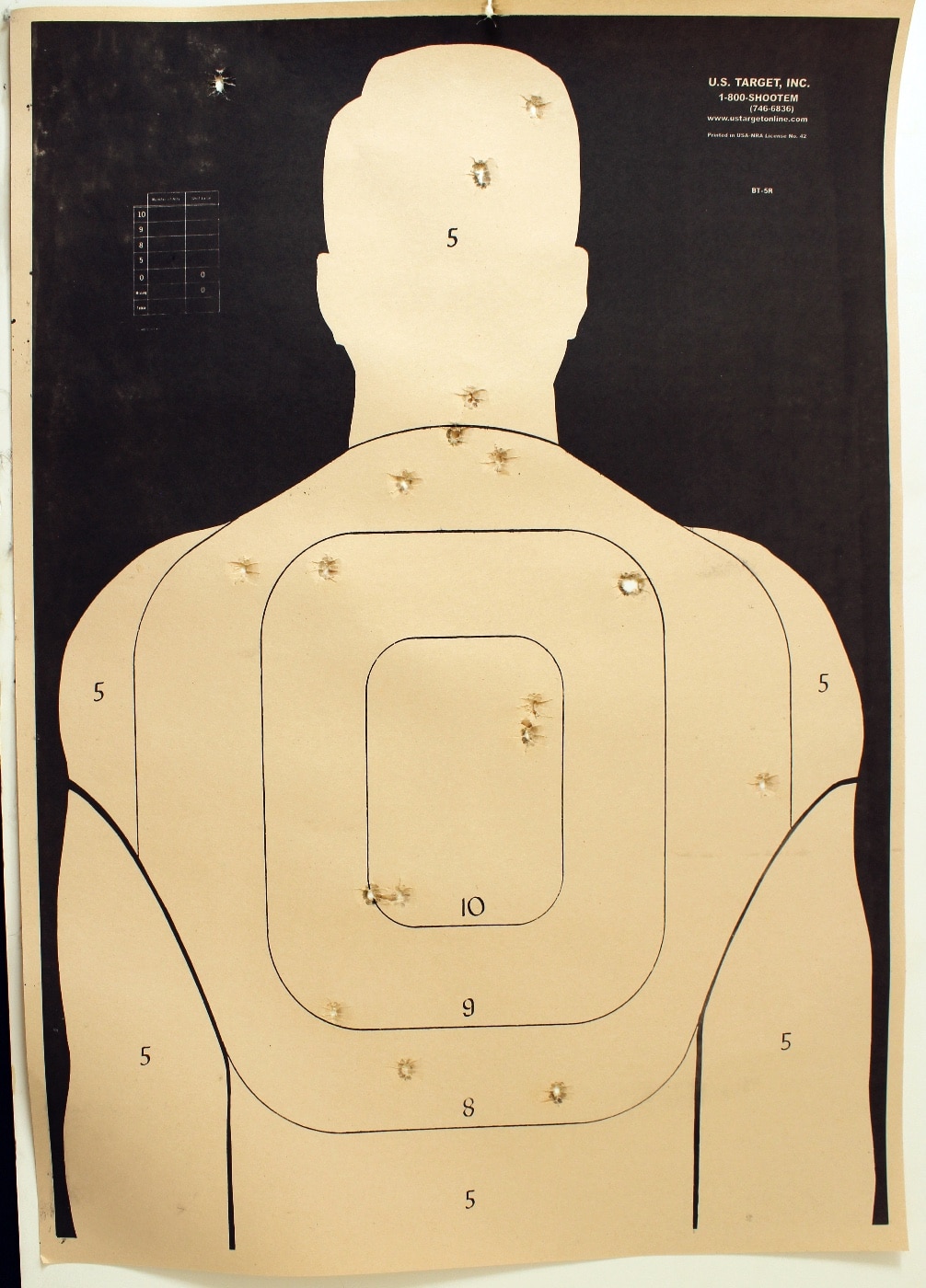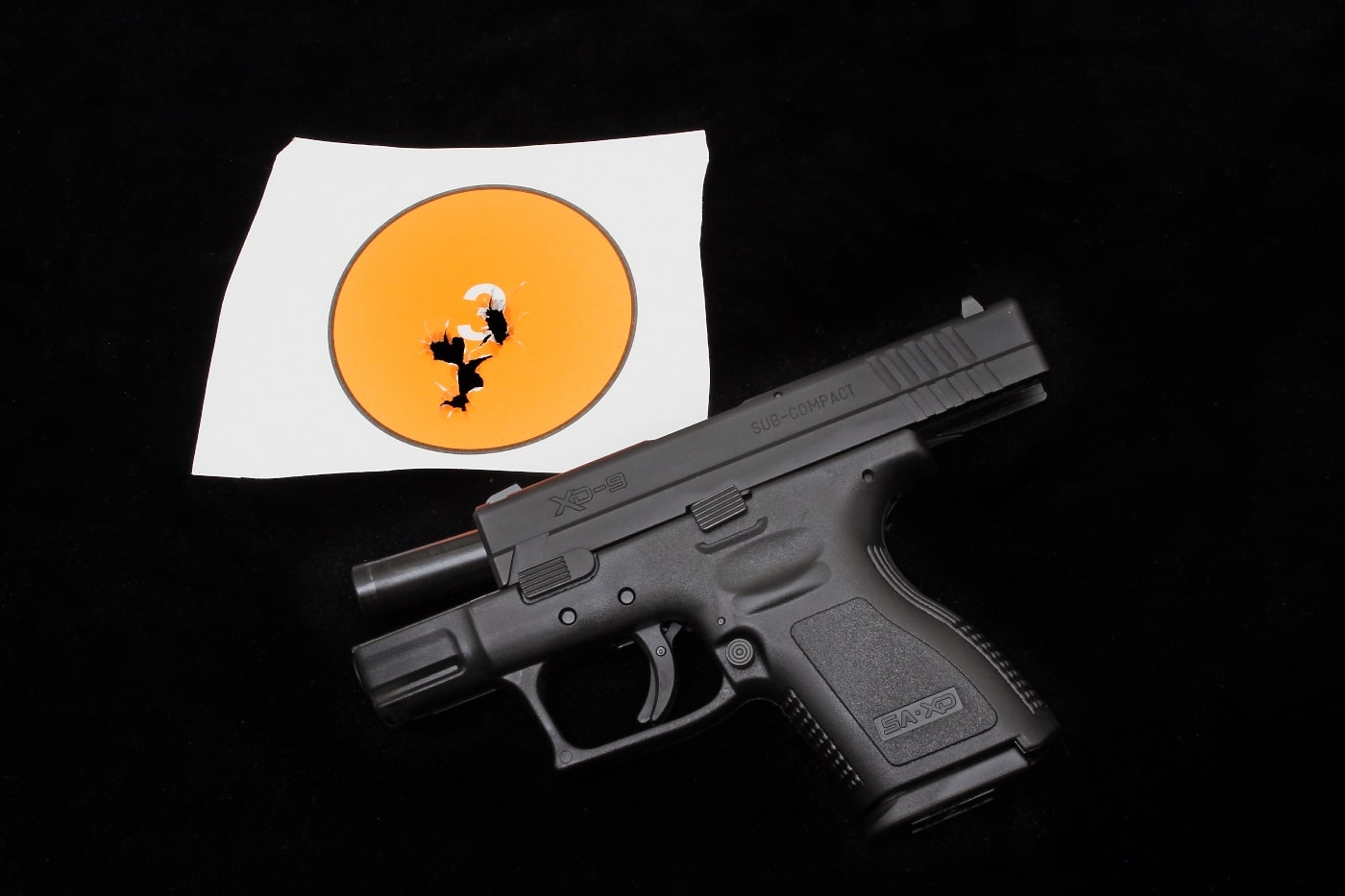A long while back, I remember reading about how some of the practical shooting sports had a fairly impressive contingent of shooters from the nation of Japan. Though their country’s laws forbade private handgun ownership, these shooters nevertheless availed themselves fairly well. The answer, apparently was airsoft practice. While their “guns” shot plastic BBs, they were nevertheless able to practice everything that IPSC, Steel Challenge, and IDPA required, from target transitions to footwork to drawing from the holster.
The story illustrates that live fire is just one form of building competency with one’s firearm. And, with the cost of ammo certainly not getting any cheaper year over year, an increasing number of shooters are turning to “dry-fire” practice — that is, pulling the trigger and having the hammer or striker drop on an empty chamber — in order to supplement their range time. It’s also fairly common for most experts to tell new shooters simply to dry-fire more in order to improve their marksmanship.
Today, let’s run through a few clear benefits of dry-fire and discuss those situations in which it is most equipped to deliver a tangible benefit — in addition to those issues I think dry-fire is less able to solve. And obviously, make sure you only do this with an empty firearm in a safe location and direction.
Pros of Dry Fire Training
Most theories of good shooting normally are some version of the following: if the trigger of your firearm is pulled to the rear in such a way that the alignment of the front and rear sights is not disturbed, you will most probably hit your target within your gun’s effective range.

Especially with handgun shooting, we’re left with an interesting challenge: pull what is usually somewhere between a four and a nine-pound trigger, depending on the gun, perfectly to the rear — keeping in mind that a typical handgun has a weight of about one to two pounds. It is very easy to move the gun as one manipulates the trigger.
This, fortunately, is a solvable challenge. Dry-fire allows the novice shooter to learn, kinesthetically, what a “correct” trigger press feels like. Old-timers often recommend the “penny trick,” which involves balancing a coin on the flat of the gun’s sight rib. With the gun unloaded (and triple-verified as such), if you can pull the trigger without dislodging the penny, you’re in good shape. If, however, the gun dips or climbs or twists during that process forcefully enough to dislodge the penny, one’s technique needs refinement. Most novices, however, can get this squared away within about 10 minutes.

Where dry-fire actually has a little more utility is in building more defensively minded sets of skills: it’s relatively simple in dry-fire practice to align the sights on target and pull the trigger to the rear without causing the gun to jerk around … when you have all of the time in the world. But, combine that final trigger press as part of a process that includes a draw, movement, and rapid target acquisition, and it’s far more challenging.
Additionally, dry-fire will allow a shooter to become a lot more familiar with the tactile behavior of their trigger, including where the “wall” of resistance is and how it “resets” to fire the second and all subsequent rounds of a string. Dry-fire allows shooters to ingrain a more sophisticated approach to trigger manipulation beyond just “pull the damn thing.” Instead, a shooter might become more aware of taking up the slack, providing just that last bit of press to get it to discharge, keeping the trigger “pinned” through the firing cycle, and letting the reset carry it back to the wall for a second shot.

Today, shooters can even purchase dry-fire “systems” incorporating dummy rounds that project a laser dot once struck by a firing pin. The most sophisticated include smart targets that track data, which can be sent to a phone app or other set of software to determine what the muzzle is doing when the shooter has a firearm (or facsimile thereof) in his or her hand.
The Reality
What I see time and time again is that the intermediate shooter puts in the work where dry-fire is concerned, learns the perfect trigger press, and heads back out to the range … where they continue to print shotgun pattern-sized groups.

The explanation of this phenomenon, of course, is that they are still mashing when they pull the trigger. (For the record, I dislike the word “flinch” and the connotations it carries.) Despite all of the dry-fire repetitions, they are fighting against a brain shaped by millions of years of evolution. At home, your brain certainly doesn’t expect a KABOOM, and it has no occasion to freak out when slack is being taken out of the trigger. Especially as recoil becomes louder and more intense, the tendency to rely on gross motor skills to control any particular gun is amplified.
When most shooters dry-fire, they’re actually not addressing the largest reason for why they miss the target. Grip, stance, sight alignment, and even a careful trigger pull don’t matter when a shooter is mashing on the trigger and pushing the gun off-center before the bullet has left the barrel.
In the worst cases, I have seen the intermediate shooter become perfectly convinced they are pulling the trigger exactly as they are supposed to, only to be absolutely befuddled why their handgun groups are about the size of a large pizza at 7 yards. Maybe it’s the gun, they surmise! In any case, a gulf develops between what they think they are doing and the set of outcomes that are occurring on the range.
A Fixable Problem
I mentioned before that our brains are a lot smarter than we give them credit for, but thankfully, they can also be dumb enough to work around.
What happens in the case of many shooters who continue to mash at the range is that their brains know they aren’t at home. There’s a trigger pull that their brains know is “correct” in the quietude of their dens or garages, and an altogether separate one that gets ingrained in real-world contexts.

The first part of the solution is to prove to yourself that a mash is happening. “Snap Caps,” which are brightly colored dummy rounds, are an essential purchase here. You want to load a few randomly into a few magazines, then mix those magazines up, so you lose track of where those rounds are. Alternately, you can have a friend load the magazine for you and insert the round somewhere.
If you do have any trace of a trigger mash, it will become terrifically evident when the hammer lands on a dud round. Shooters are often stunned at just how much their ingrained mechanics are trying to literally shove against the forces of recoil, and they’ll push the barrel to and fro. Until this aspect of one’s shooting is addressed, the quest for accuracy will be a long one. And, again, if a shooter doesn’t know it’s happening, it will remain an invisible and undiagnosable gremlin.
The second part of the solution, for those who choose to embrace it, is to dry-fire at the range as well. As soon as groups begin to deviate and you suspect bad habits creeping in, dry-fire. You can either load a dummy round through the magazine or let the hammer fall on an empty chamber — it’s your choice.

You just may find that your reptilian brain hasn’t “caught up” to what’s happening for those first few rounds. You’re in the same place, with the same gun, possibly with the same fight-or-flight response having kicked in. It may be hard to slowly and deliberately work the trigger: a part of you, despite ample logical evidence to the contrary, is still expecting that gun to go boom based on the rest of the available context clues.
This is where it’s critical to align the sights on target and slowly press the trigger so that your sights don’t shake and the gun remains still as possible. Do this until you’ve “reset” your bad habits. Only then, should you resume firing. If you find that you’re again mashing the trigger, go back to the dry-fire.
The process I’m describing is not particularly fun, per se. You might feel self-conscious doing it, but I wouldn’t worry too much: beginning shooters aren’t going to have the awareness to understand what’s happening in the shooting bays around them, and expert shooters will immediately know what you’re trying to accomplish through the succession of snaps they’ll hear. Nevertheless, you’ll make sure that the rounds you fire at your range session are purposeful and geared at boosting your shooting.
In a fairly short amount of time, you’ll re-wire your trigger press so that your brain no longer draws a distinction between “the trigger press I’ve mastered at home” and “the trigger press I actually do when the gun goes boom.” Instead, it will just be one press: the correct one.
The Wrap-Up
The reality is that my suggested dry-fire process is work, plain and simple. I like tech and gadgets as much as the next guy, but the cold reality is that no dry-fire gizmo alone is going to radically re-shape a person’s shooting technique.
Long story short: dry-fire is an exceptional way for beginners and intermediates to improve their marksmanship. It can even help experts shorten the time it takes to make a good first round hit from concealment or a low ready. However, if aim of the dry-fire is to cure a mash, it’s not a tool that can be done only in the garage if it’s intended to be applied at the range or in a serious life-or-death event. In those cases, I humbly present the tips above in the hopes that they result in more of our readers’ bullets chewing out bullseyes and A-zones.
Editor’s Note: Please be sure to check out The Armory Life Forum, where you can comment about our daily articles, as well as just talk guns and gear. Click the “Go To Forum Thread” link below to jump in!
Join the Discussion
Featured in this article
Read the full article here


Leave a Reply